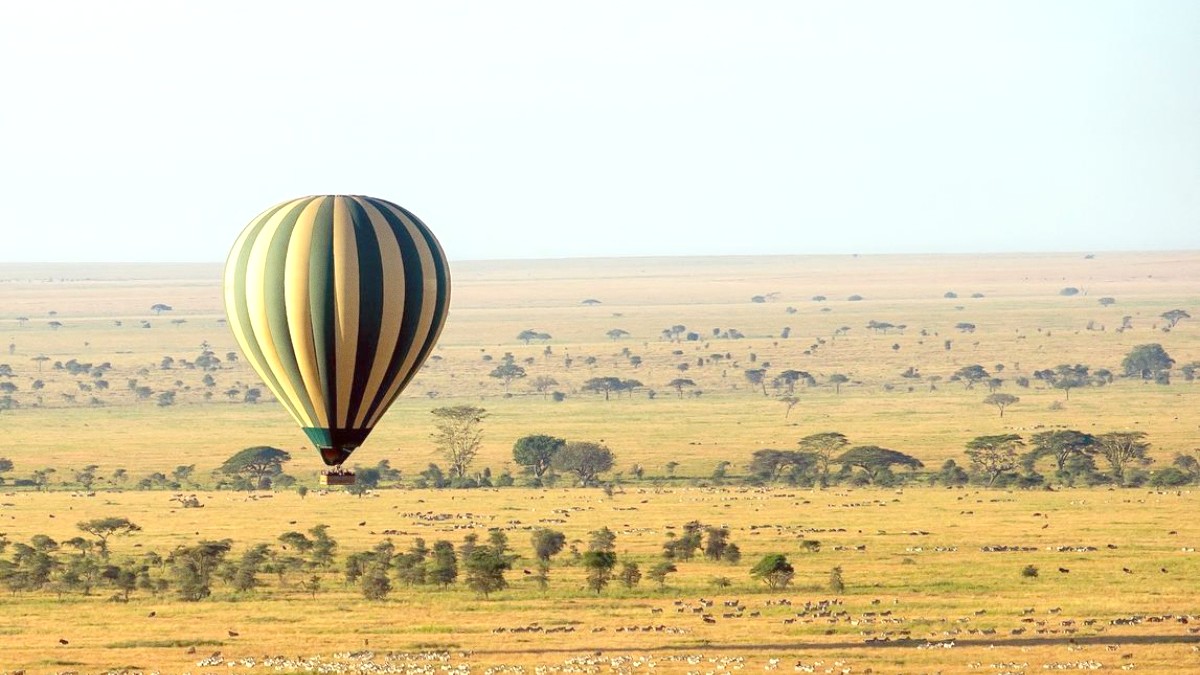
Northern Tanzania, Tanzania
Prepare for a safari beyond sightseeing; it turns into an immersion into a living, breathing ecosystem.
Serengeti National Park spans 14,763 square kilometers (5,700 square miles). This vastness sits in northern Tanzania, bordering Kenya. With Kenya's Masai Mara, it forms the larger Serengeti ecosystem. Animals move freely between the two nations, especially during the Great Migration. Southeast of the Serengeti lies the Ngorongoro Conservation Area, another important wildlife habitat.
The park's landscape shows remarkable diversity. Wide-open grasslands define much of the southern and central regions. These plains provide ideal grazing. Savannas with iconic acacia trees create classic safari scenes. Along rivers, like the Seronera, Grumeti, and Mara, dense riverine forests thrive. Scattered across the plains, kopjes dot the landscape. These isolated, rocky outcrops serve as vantage points. This varied topography supports incredible plant and animal life.
The name "Serengeti" comes from the Maasai word "Siringet," meaning "the place where the land runs on forever." This accurately describes the park's expansive plains. For centuries, the nomadic Maasai people lived in harmony with the land. Their deep connection to this area forms a significant part of its cultural heritage. European explorers and hunters arrived in the early 20th century. They quickly recognized the area for its rich wildlife populations.
The need to protect this natural treasure soon became clear. In 1929, authorities established a partial game reserve. This early step laid the groundwork for formal conservation. In 1951, the area gained full status as Serengeti National Park. This declaration safeguarded the unique ecosystem and its migratory patterns. The park's protection continued to gain international recognition. In 1981, UNESCO designated Serengeti National Park a World Heritage Site. The park also holds status as an Important Bird Area. This highlights its global significance.
Lion, leopard, elephant, rhino, and buffalo roam the plains.
Vast numbers of wildebeest and zebra follow the rains.
Cheetahs, hyenas, and wild dogs actively hunt.
Giraffes, various antelope, and hippos populate different habitats.
Over 500 bird species live in the park, including migratory birds.
Wildlife viewing through game drives forms the core activity. Rides occur in specialized 4x4 safari vehicles. Experienced guides lead these drives. They assist in spotting animals, explaining behavior, and navigating the vast plains. Hot air balloon safaris extend another way to experience the park, offering breathtaking aerial views. This dynamic, living landscape promises awe-inspiring encounters with nature.
The main activity for observing wildlife. Drivers use specialized 4x4 safari vehicles. Guides provide information about animal behavior and ecology. Enjoy close encounters from the safety of your vehicle.
Experience a serene sunrise flight over the plains. Enjoy panoramic views of the Serengeti landscape and wildlife from above. Flights conclude with a bush breakfast and champagne.
The history of the Serengeti mirrors a journey from traditional Maasai lands to a globally recognized conservation success story. It represents ongoing efforts to balance human presence with the protection of one of the world's most spectacular natural environments.
Serengeti National Park offers a concentrated view of Africa's wild heart. It covers an area of 14,763 square kilometers (5,700 square miles). This expanse places it among the largest and most ecologically important national parks in Africa.
The ecosystem here shifts through varied landscapes. You find vast grasslands, iconic savannas with scattered acacia trees, and dense riverine forests along the water sources. These diverse habitats support an incredible array of life.
Over 1.5 million wildebeest and hundreds of thousands of zebra undertake a continuous, circular journey across the plains, following rains and fresh grass.
Vast grasslands, savannas with acacia trees, and dense riverine forests all contribute to rich biodiversity.
Unmatched chances for capturing iconic wildlife moments and expansive landscapes.
The park's conservation status is high. It holds UNESCO World Heritage Site designation. This designation protects its unique ecological processes and biodiversity. Its recognition as an Important Bird Area further highlights its ecological value.